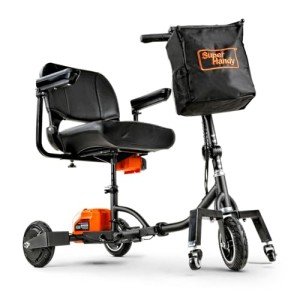How To Make A Successful Mobility Devices Tips From Home

Understanding Mobility Devices: Enhancing Independence and Quality of Life
In today's hectic world, the desire for mobility is universal. However, certain medical conditions or age-related challenges can prevent movement, leading to a continuous search for help. Mobility devices work as essential tools to enhance independence, enhance lifestyle, and enable people to engage completely in their neighborhoods. This article supplies a comprehensive summary of mobility devices, including their types, features, selection requirements, and more.
Types of Mobility Devices
Mobility devices range from simple aids to intricate devices, tailored to meet different requirements. Below is a table summarizing common types of mobility devices:
| Type of Device | Description | Ideal For |
|---|---|---|
| Walkers | Four-legged assistance devices that supply superior stability while strolling. | People needing additional assistance. |
| Walking canes | Single or three-legged sticks that improve balance and support walking. | Those with slight mobility problems. |
| Wheelchairs | Seats mounted on wheels, available in handbook and electric versions. | People with minimal or no mobility. |
| Scooters | Electric cars developed for outdoor usage and ease of navigation. | Those who can't stroll fars away. |
| Crutches | Devices that help individuals move weight far from an injured leg. | People recovering from leg injuries. |
| Rollators | Walkers with wheels, seats, and brakes for improved mobility. | Users requiring rest alternatives while strolling. |
| Raise Chairs | Reclining chairs that assist users in standing up and taking a seat. | Seniors or those with mobility restrictions. |
| Mobility Scooters | Small electric lorries for minimal mobility, typically used outdoors. | People needing assistance over long distances. |
Key Features of Mobility Devices
When picking a mobility device, numerous key functions ought to be considered to make sure optimal functionality and ease of usage:
- Weight Capacity: Understanding the device's weight constraint is crucial for safety and effectiveness.
- Adjustability: Devices needs to be adjustable in height and width to fit the user easily.
- Portability: Lightweight and foldable options are necessary for users who travel or require transport.
- Stability and Safety: Look for features like anti-tip wheels and tough structures to boost safety.
- Ease of Use: Simple mechanisms and user-friendly styles can make a substantial difference in daily usage.
- Convenience: Ergonomic designs and padded seats can improve the user experience.
Selecting the Right Mobility Device
Selecting the right mobility device can be a challenging job. Here are some steps to guide the decision-making process:
- Assess Needs: Evaluate the individual's mobility difficulties and everyday activities.
- Consult a Professional: Engage healthcare specialists who can offer recommendations based upon the person's physical condition.
- Trial Options: If possible, trial different devices to determine convenience and performance.
- Review Budget: Consider the expense of the gadget, including any additional functions or adjustments required.
- Research study Options: Determine the best brands and designs by reading reviews and comparisons.
Table: Comparative Analysis of Popular Mobility Devices
| Gadget | Benefits | Downsides |
|---|---|---|
| Walkers | Excellent stability, promotes strolling. | Bulky, might restrict motion in small spaces. |
| Walking canes | Lightweight, improves balance. | Might not supply enough support for severe mobility issues. |
| Wheelchairs | Perfect for those with considerable mobility constraints. | Can be cumbersome, particularly in indoor environments. |
| Scooters | Great for outside usage, easy to maneuver. | Restricted indoor functionality, heavier. |
| Rollators | Supplies rest option, simple to move. | May require more space than traditional walkers. |
| Raise Chairs | Comfortable, helps transition from sitting to standing. | More expensive, larger footprint. |
Frequently Asked Questions (FAQs)
1. What is a mobility gadget?
A mobility device is any tool developed to assist people in moving and browsing their environment. This includes walkers, wheelchairs, scooters, and crutches.
2. How do I know which mobility device is best for me?
Consider your specific mobility obstacles, physical capabilities, and way of life requirements. Consulting with health care professionals can also provide customized recommendations.
3. Are mobility devices covered by insurance coverage?
Many insurance plans, consisting of Medicare, may cover specific mobility devices. mouse click the next webpage to consult your insurance supplier for specific coverage information.
4. Can I lease a mobility device instead of purchasing one?
Yes, numerous medical supply shops and pharmacies use leasings for mobility devices. This alternative is helpful for individuals with short-lived mobility issues.
5. How can I preserve my mobility gadget?
Routine maintenance is vital. It consists of cleaning the device, looking for wear and tear, and making sure all parts are operating properly.
The Impact of Mobility Devices on Quality of Life
Mobility devices significantly enhance the lifestyle for individuals with minimal mobility. They foster self-reliance, motivate social interaction, and improve access to essential services and recreational activities.
- Increased Independence: Users can browse their neighborhoods, go to events, and engage in hobbies without depending on others.
- Social Engagement: Mobility devices assist in involvement in social gatherings, consequently combating feelings of isolation.
- Enhanced Safety: Devices provide stability and lower the threat of falls, promoting user confidence.
Mobility devices are more than simply tools for movement; they are entrances to self-reliance and quality living. By comprehending the various kinds of mobility aids readily available, their key functions, and considerations for selecting the best gadget, individuals can make informed decisions about their mobility requires. Ultimately, the best mobility device can lead to a more active, satisfying life. Whether it's a walker, wheelchair, or scooter, the right option contributes considerably to boosting the mobility and self-reliance of users.

